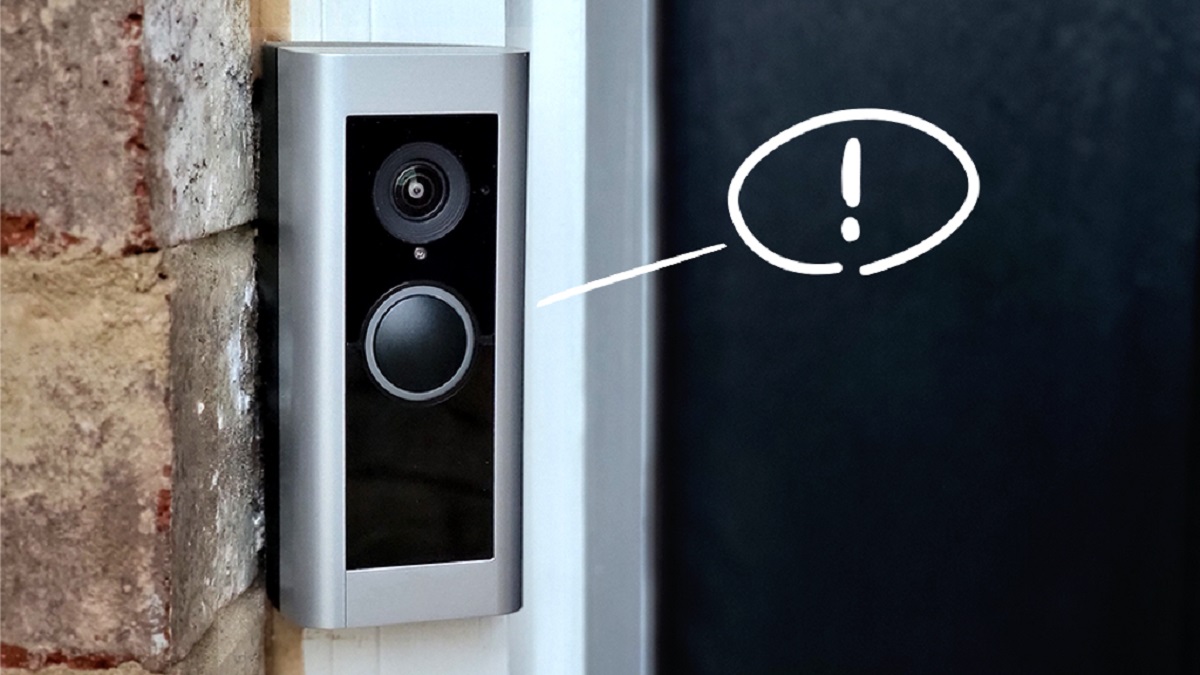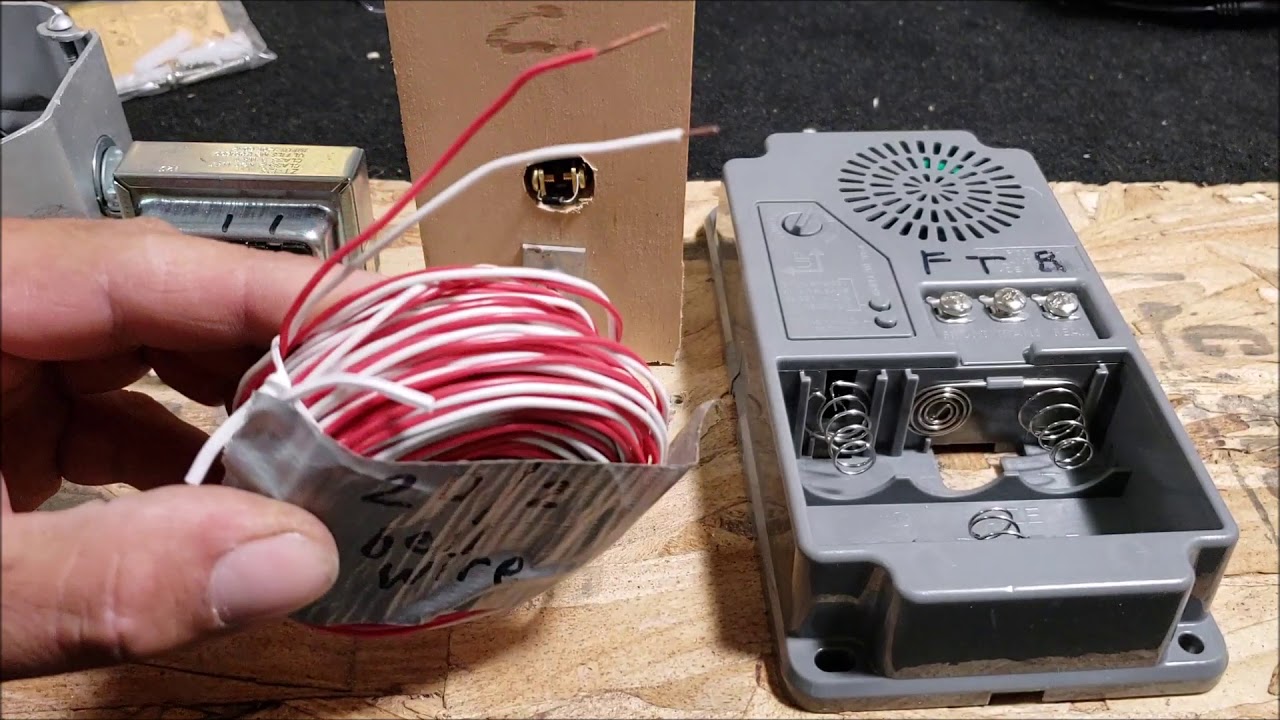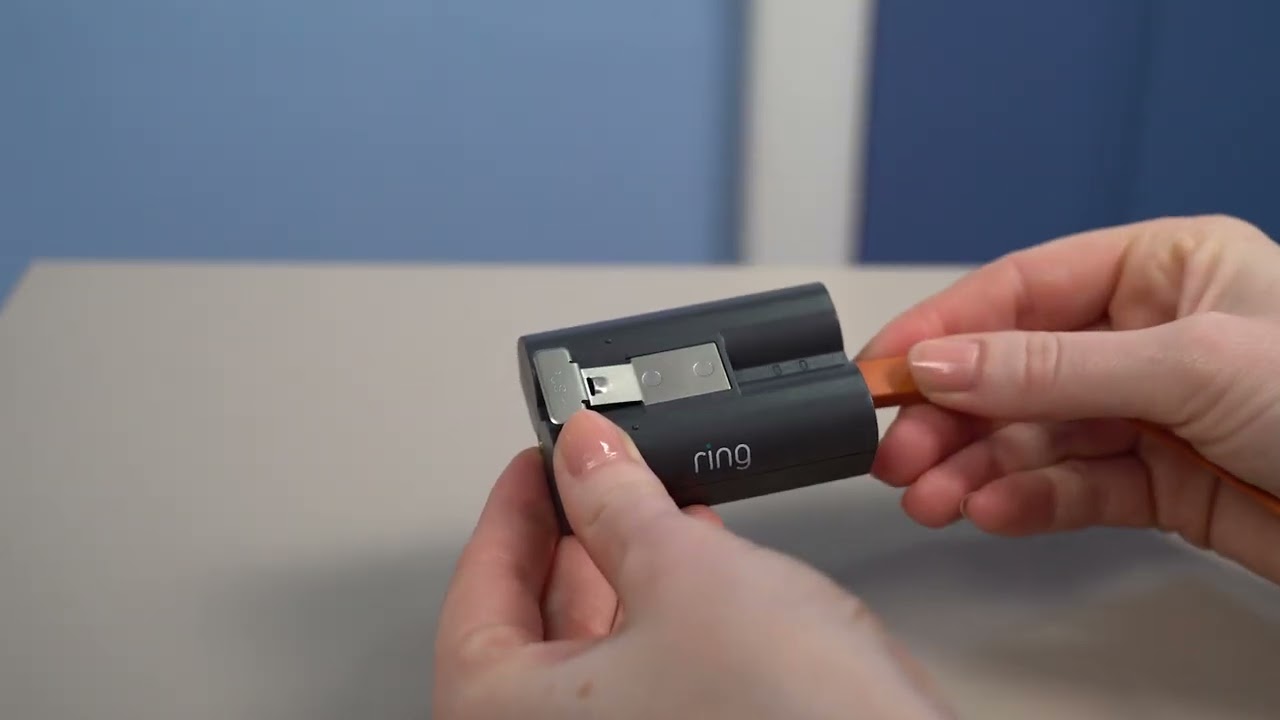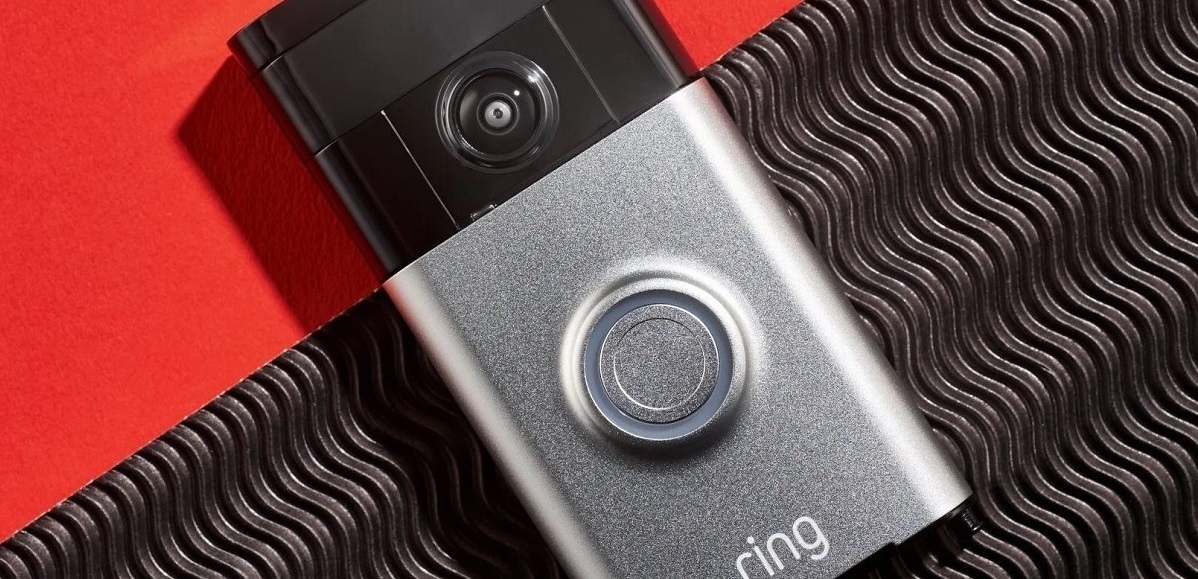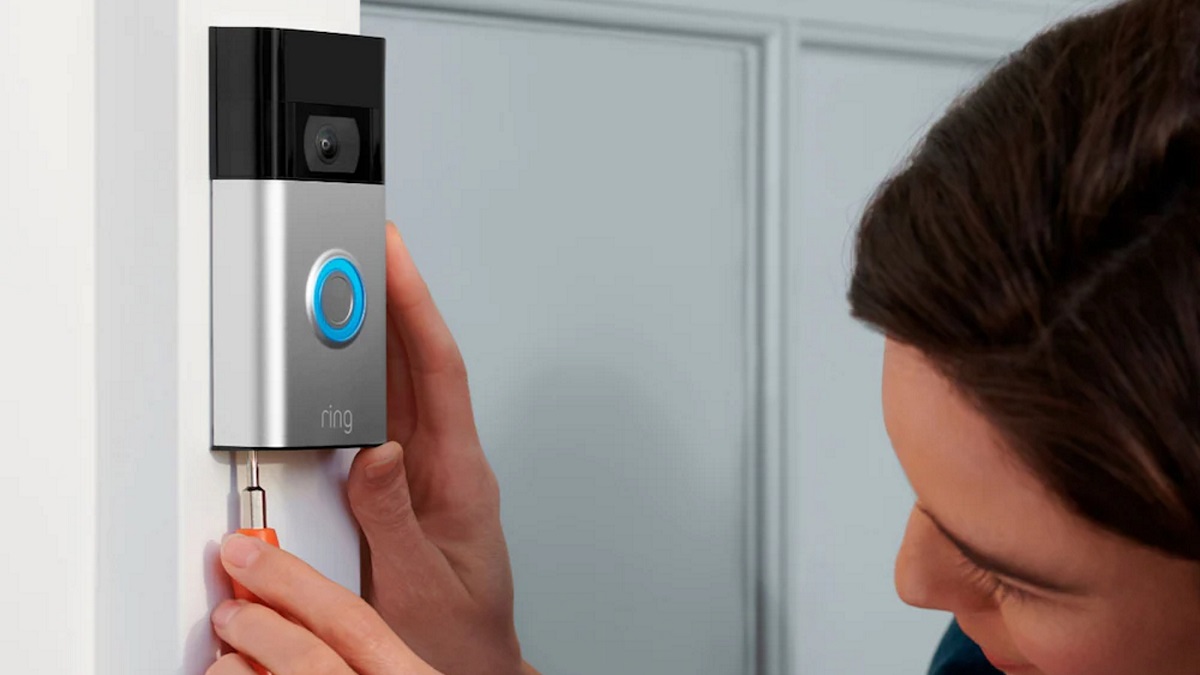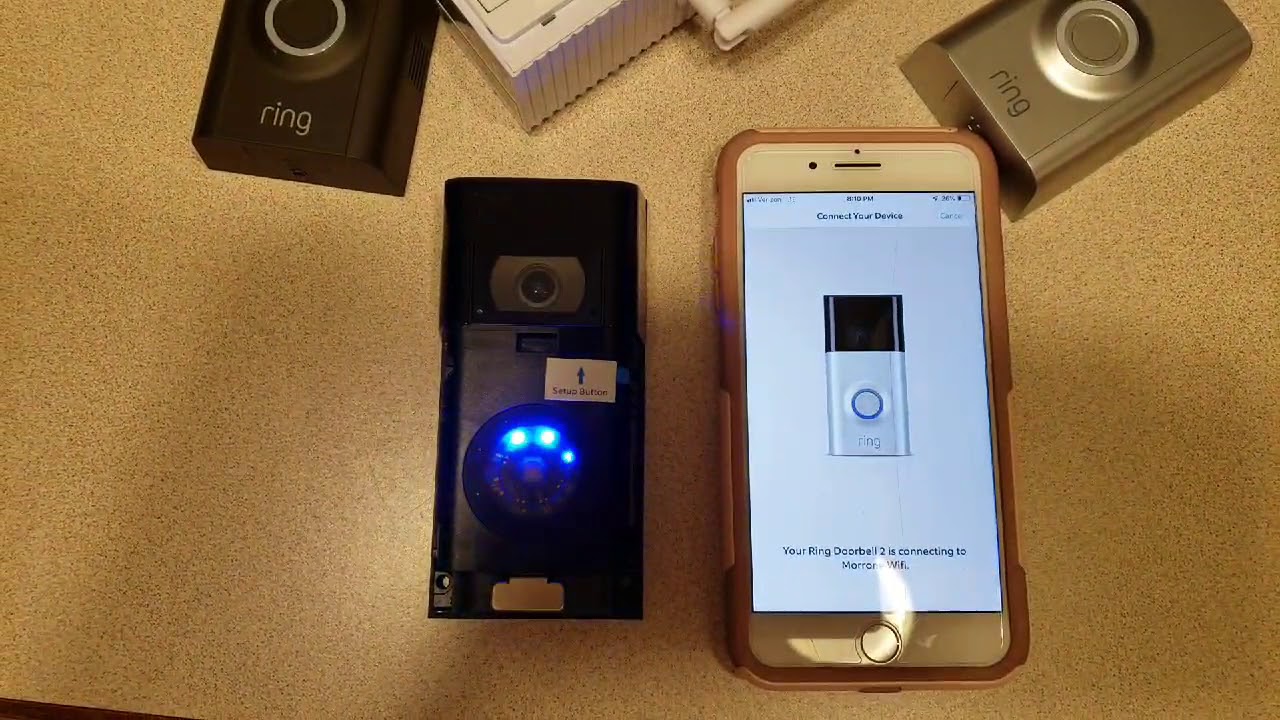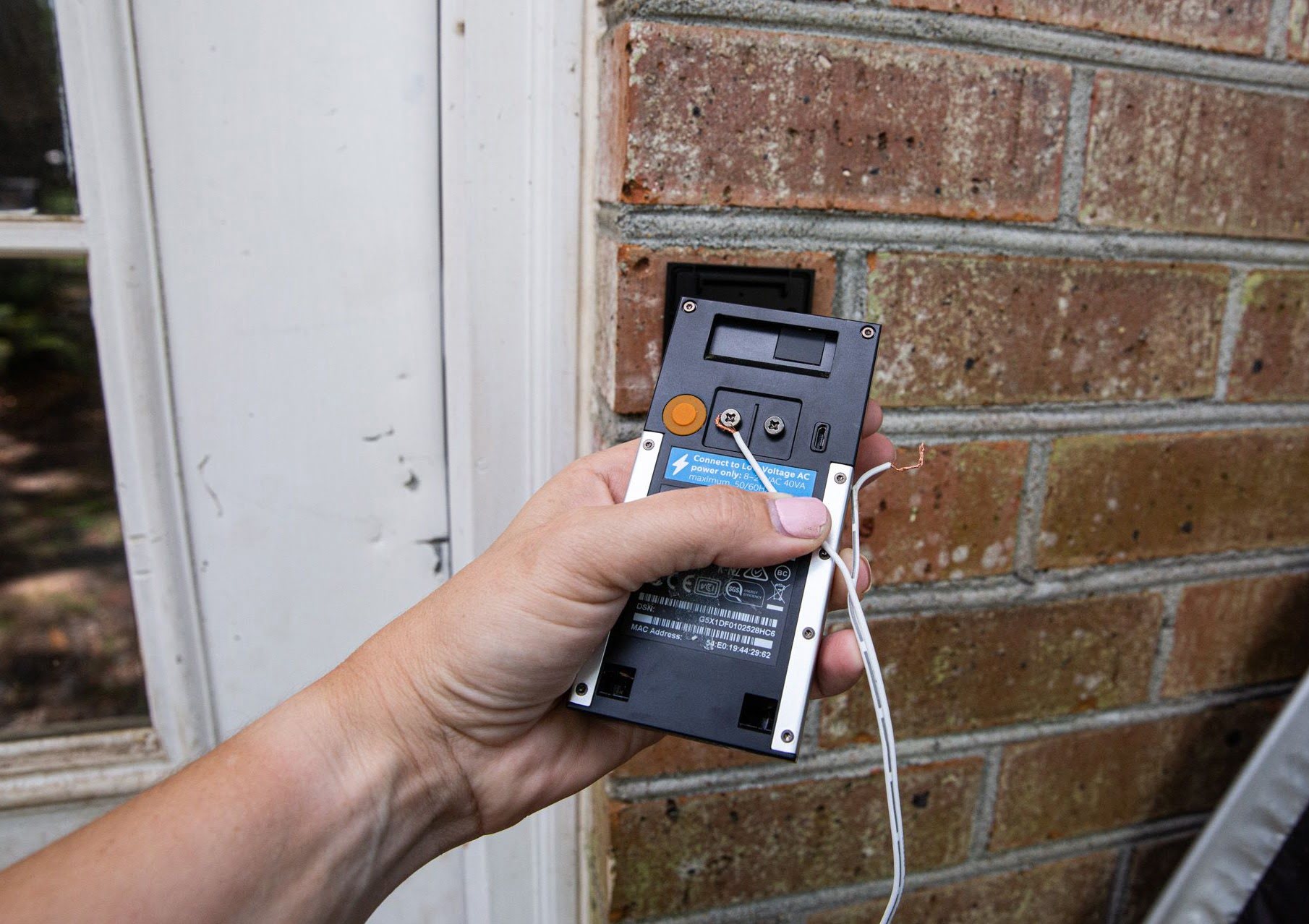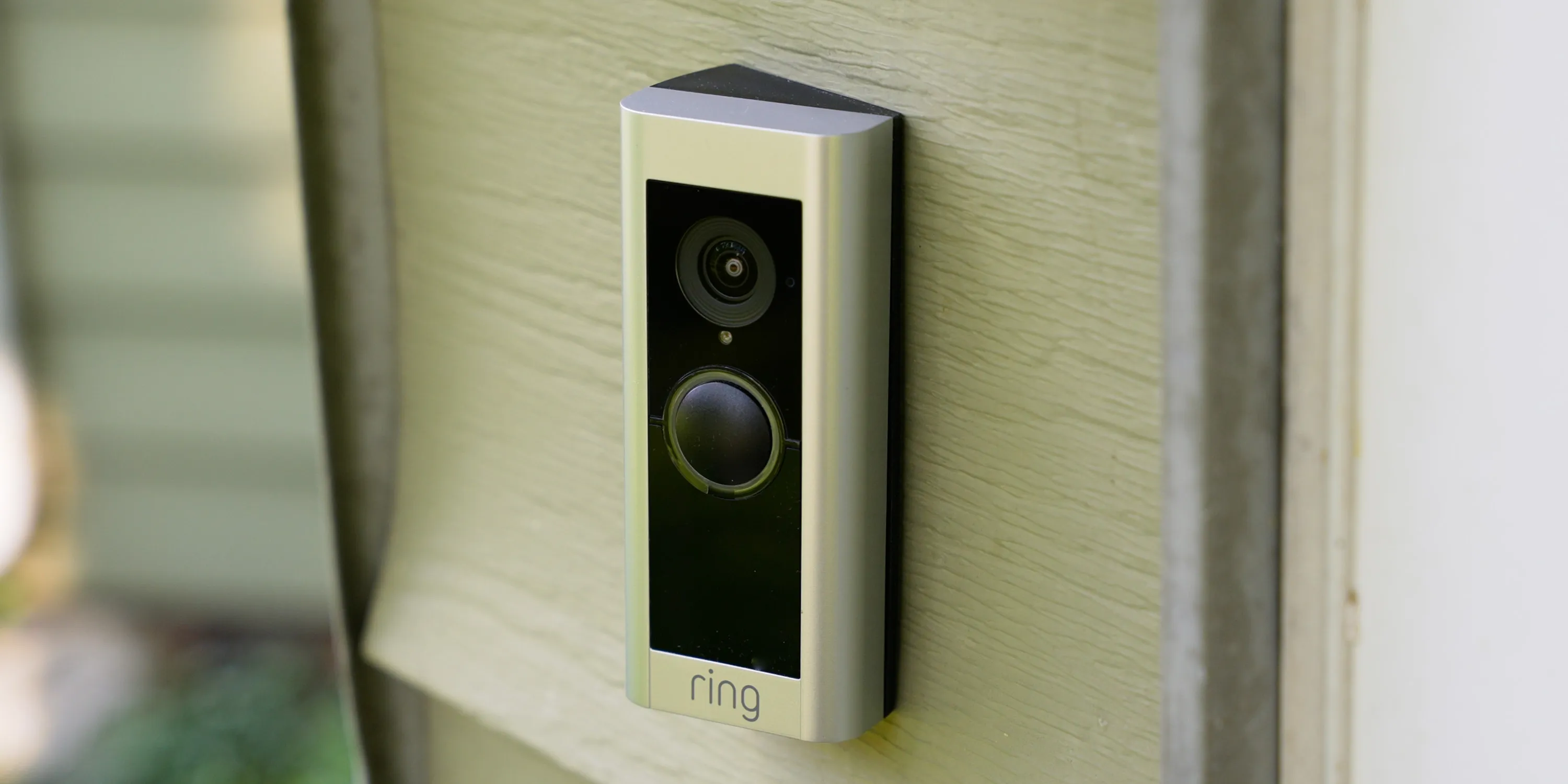Introduction
When it comes to home security, the Ring Video Doorbell is a popular choice for many homeowners. This innovative device allows you to monitor and communicate with visitors at your front door, even when you’re not home. But have you ever wondered how a Ring Video Doorbell is powered?
Well, the answer can vary depending on the model you have. In this article, we will explore the different power options available for Ring Video Doorbells and how they work. Whether you have a hardwired or battery-powered doorbell, there are several ways to ensure that your Ring device remains operational and ready to use.
Before we dive into the specifics of each power option, it’s important to note that Ring Video Doorbells are designed to be easy to install and set up. Whether you’re a DIY enthusiast or prefer professional installation, you’ll find a power solution that suits your needs.
In the following sections, we will examine the various power options for Ring Video Doorbells, including hardwired, battery-powered, rechargeable battery, solar power, power over Ethernet (PoE), wired Power over Ethernet (PoE+) adapter, and USB power. We will also discuss the power consumption of Ring Video Doorbells to help you make an informed decision about which power option is best for you.
Hardwired Ring Video Doorbell
A hardwired Ring Video Doorbell is a popular choice for homeowners who prefer a continuous power source without worrying about battery life. This option requires connecting the doorbell to your existing doorbell wiring or a compatible transformer.
To install a hardwired Ring Video Doorbell, you’ll need to turn off the power to your existing doorbell circuit at the breaker box. Once the power is off, you can remove your old doorbell and disconnect the wires. Then, you’ll connect the wires to the corresponding terminals on the Ring Video Doorbell.
Hardwired Ring Video Doorbells have the advantage of receiving a constant power supply, eliminating the need to recharge batteries. This ensures uninterrupted operation and consistent performance, so you never miss a visitor or an important alert.
Additionally, hardwired Ring Video Doorbells can typically generate a stronger Wi-Fi signal compared to battery-powered models. This is because they can connect directly to your home’s electrical system, providing a more reliable and consistent connection.
It’s worth noting that if you don’t already have existing doorbell wiring, the installation of a hardwired Ring Video Doorbell may require hiring a professional electrician to run the necessary wiring. This can add to the overall installation cost but provides a reliable and maintenance-free power solution.
Overall, a hardwired Ring Video Doorbell offers the convenience of a continuous power source and a strong Wi-Fi connection. If you have existing doorbell wiring or are willing to invest in professional installation, this power option is a reliable choice for your home security needs.
Battery-Powered Ring Video Doorbell
If you don’t have existing doorbell wiring or prefer a simpler installation process, a battery-powered Ring Video Doorbell is a great option. This type of doorbell relies on a built-in rechargeable battery to provide power.
The battery-powered Ring Video Doorbell is designed to be easy to install and can be set up in a matter of minutes. Simply mount the doorbell to the desired location near your front door using the included screws, and you’re good to go.
The battery-powered option offers the flexibility to place your Ring Video Doorbell in any location, even if there are no existing wires available. This allows you to choose the perfect vantage point for capturing clear video footage and communicating with visitors.
One advantage of a battery-powered Ring Video Doorbell is that you won’t have to worry about power outages or interruptions. The built-in rechargeable battery can last for months on a single charge, depending on usage. When the battery runs low, you’ll receive a notification in the Ring app, and you can easily remove the doorbell to recharge it using the included USB cable.
It’s important to note that the battery life can vary depending on factors such as the frequency of use, the quality of Wi-Fi signal, and the temperature conditions. In colder climates, the battery life may be slightly reduced.
Additionally, it’s recommended to have a spare battery on hand, so you can quickly swap out the old battery with a fully charged one, ensuring that your Ring Video Doorbell remains operational at all times.
In terms of functionality, the battery-powered Ring Video Doorbell offers the same features as its hardwired counterpart. You’ll be able to see, hear, and speak to anyone at your front door using the Ring app, receive motion-activated alerts, and access recorded footage through cloud storage.
Overall, the battery-powered Ring Video Doorbell is a convenient option that provides flexibility in terms of placement and eliminates the need for doorbell wiring. With a rechargeable battery, you can enjoy uninterrupted functionality and peace of mind knowing that your home is protected.
Rechargeable Battery
For those who opt for a battery-powered Ring Video Doorbell, the rechargeable battery is a key component that ensures continuous operation. The rechargeable battery is specifically designed to power the doorbell and can be easily removed for charging.
The rechargeable battery provided with Ring Video Doorbells is a high-capacity lithium-ion battery. It is designed to provide long-lasting power and can typically last for several months on a single charge, depending on usage.
When the battery level becomes low, you will receive a notification in the Ring app, prompting you to recharge the battery. To recharge the battery, simply remove it from the doorbell by pressing the release tab and connect it to a power source using the included USB cable.
The charging process usually takes a few hours, and once the battery is fully charged, you can reinsert it back into the Ring Video Doorbell. During the charging process, you can still receive alerts and answer calls using the Ring app on your smartphone or other devices.
It’s important to mention that it’s recommended to use the provided USB cable and a compatible power source when charging the battery. Using third-party cables or chargers may affect the performance and lifespan of the battery.
One advantage of the rechargeable battery is the convenience it offers. You can easily swap out the depleted battery with a fully charged one, ensuring uninterrupted operation of your Ring Video Doorbell.
If you prefer an eco-friendly option, Ring also offers a recycling program for the rechargeable batteries. Through this program, you can responsibly dispose of the old batteries and contribute to environmental sustainability.
Overall, the rechargeable battery for Ring Video Doorbells provides a reliable and convenient power solution. It allows for easy charging and ensures that your doorbell remains operational without the need for constant battery replacements.
Solar Power
Solar power is a sustainable and environmentally-friendly option for powering your Ring Video Doorbell. With a solar-powered setup, you can harness the energy of the sun to keep your doorbell fully charged.
Using solar power with your Ring Video Doorbell involves installing a compatible solar panel near the doorbell. This solar panel absorbs sunlight and converts it into power, which is then used to charge the doorbell’s battery.
The installation process for a solar-powered Ring Video Doorbell is relatively straightforward. You’ll need to mount the solar panel in a location that receives ample sunlight throughout the day. This ensures that it can effectively convert sunlight into energy to keep your doorbell powered.
One advantage of solar power is that it provides a continuous and maintenance-free power source. As long as the solar panel receives sufficient sunlight, your Ring Video Doorbell will have a constant flow of power, eliminating the need for battery recharging or hardwiring.
Solar power is particularly beneficial for those in areas with abundant sunshine. However, even in areas with less sunlight, modern solar panels are capable of generating enough power to keep your Ring Video Doorbell functioning properly.
It’s important to consider the positioning and placement of the solar panel to ensure optimal energy production. The solar panel should be installed in a location that receives maximum sunlight and is free from obstructions such as trees or walls.
Additionally, it’s worth noting that solar power can be combined with a rechargeable battery for backup power. This means that even during cloudy days or in the event of power outages, your Ring Video Doorbell will continue to receive power from the backup battery, guaranteeing uninterrupted functionality.
In summary, solar power offers a sustainable and hassle-free power solution for your Ring Video Doorbell. By harnessing the power of the sun, you can enjoy continuous operation without relying on batteries or electrical wiring.
Power over Ethernet (PoE)
Power over Ethernet, commonly referred to as PoE, is a method of providing power and network connectivity to devices through a single Ethernet cable. This technology is an alternative method of powering your Ring Video Doorbell if you have an existing Ethernet network infrastructure.
To utilize PoE with your Ring Video Doorbell, you’ll need a PoE injector or a PoE switch. These devices are responsible for injecting power into the Ethernet cable, which is then used to power the doorbell.
The advantage of using PoE is that it eliminates the need for a separate power cable or battery. With a PoE setup, your Ring Video Doorbell can receive both power and network connectivity through a single cable, reducing clutter and simplifying the installation process.
It’s important to note that not all Ring Video Doorbell models support PoE directly. However, you can use a PoE splitter or adapter to convert the PoE power to a standard power connection that is compatible with your Ring device.
PoE is typically used in commercial or enterprise settings where Ethernet cables are already in place. However, if you have a home network with PoE capability, you can take advantage of this power option for your Ring Video Doorbell.
One thing to consider when using PoE is the power budget of your PoE switch or injector. Ensure that the power provided by the PoE source is sufficient to support all devices connected to it, including your Ring Video Doorbell.
Another advantage of using PoE is that it can provide a more stable and reliable power source compared to batteries or wireless connections. Since the power is delivered over the Ethernet cable, there is less susceptibility to power outages or battery failures.
In summary, Power over Ethernet (PoE) offers a convenient and efficient way to power your Ring Video Doorbell while utilizing your existing Ethernet network infrastructure. By eliminating the need for separate power cables, PoE simplifies the installation process and ensures a reliable power source for your doorbell.
Wired Power over Ethernet (PoE+) Adapter
A Wired Power over Ethernet (PoE+) adapter is another power option for your Ring Video Doorbell that utilizes the PoE technology. It provides a reliable and continuous power source, similar to traditional hardwiring, but without the need for separate doorbell wiring.
A PoE+ adapter allows you to power your Ring Video Doorbell by connecting it to an existing PoE network switch or PoE injector. The PoE+ adapter acts as a bridge between the Ethernet cable and the doorbell, delivering power and network connectivity simultaneously.
The advantage of using a Wired PoE+ adapter is that it provides a seamless integration between your Ring Video Doorbell and your existing PoE network infrastructure. If you already have a PoE switch or injector in place, the installation process is relatively straightforward.
When using a Wired PoE+ adapter, it’s important to ensure that your PoE switch or injector supports the required power output (usually 802.3af/802.3at standard) to supply enough power to the adapter and the Ring Video Doorbell.
One benefit of using a Wired PoE+ adapter is that it eliminates the need for separate power cables or batteries. With this power option, your Ring Video Doorbell will be continuously powered through the Ethernet cable, ensuring uninterrupted functionality.
Similar to other PoE solutions, a Wired PoE+ adapter provides a stable and reliable power source for your Ring Video Doorbell. It eliminates the reliance on batteries or external power outlets, reducing the chances of power interruptions or failures.
It’s worth noting that not all Ring Video Doorbell models are directly compatible with PoE. However, you can use a PoE splitter or adapter to convert the PoE power to a standard power connection that fits your Ring device.
In summary, a Wired Power over Ethernet (PoE+) adapter provides a convenient and reliable power option for your Ring Video Doorbell, leveraging your existing PoE network infrastructure. By using a single Ethernet cable, you can power your doorbell and ensure continuous operation without the need for extra wiring or batteries.
USB Power
USB power is a simple and versatile option for powering your Ring Video Doorbell. This method involves connecting your doorbell to a USB power source, such as a wall outlet or a power bank, using a USB cable.
Using USB power provides flexibility in terms of power source options, as USB outlets are commonly found in homes and can be easily accessed. You can plug your Ring Video Doorbell into a USB power adapter that is directly connected to an electrical outlet, or use a power bank for portable and backup power.
To power your doorbell through USB, you’ll need to use a USB-to-micro-USB cable that is compatible with your Ring device. Simply connect one end of the cable to the USB power source, and the other end to your Ring Video Doorbell.
One advantage of USB power is its simplicity and ease of installation. There is no need for complex wiring or dealing with batteries. Using USB power allows for a quick and straightforward setup process, ensuring that your doorbell is powered and ready to use.
USB power also provides the convenience of easily disconnecting and moving your Ring Video Doorbell if needed. If you wish to relocate your doorbell to another location, simply unplug the USB cable and reposition the device without any hassle.
Another benefit of USB power is that it allows for the use of power banks, providing a portable power option for your Ring Video Doorbell. This can be particularly useful if you are camping, traveling, or in cases where a traditional power source is not easily accessible.
When using USB power, it’s important to ensure that the USB power source can provide the necessary power output to fully support your Ring Video Doorbell. It’s recommended to use a USB power adapter that meets the manufacturer’s specifications to ensure optimal performance.
In summary, USB power offers a simple, versatile, and portable solution for powering your Ring Video Doorbell. Whether you connect it to a wall outlet or use a power bank, USB power allows for easy installation and flexibility in powering your doorbell.
Ring Video Doorbell Power Consumption
Understanding the power consumption of your Ring Video Doorbell is important when selecting the appropriate power source and ensuring reliable performance. The power consumption of the doorbell varies depending on the specific model and its usage.
In standby mode, where the doorbell is not actively recording or communicating, the power consumption is relatively low. Ring Video Doorbells are designed to be energy efficient, consuming minimal power to remain operational and ready to detect motion or ring events.
When the doorbell is activated, either by motion detection or a visitor pressing the doorbell button, the power consumption increases as the device starts recording, transmitting audio and video, and sending alerts to your connected devices.
It’s important to note that the power consumption of your Ring Video Doorbell can also be influenced by factors such as the quality of Wi-Fi signal, the distance from the router, and the frequency of usage. These factors can impact the performance and battery life of your device.
If you opt for a battery-powered Ring Video Doorbell, it’s essential to monitor the battery level regularly and recharge it as needed to ensure uninterrupted operation. The battery life can vary depending on usage, video quality settings, and environmental conditions.
For hardwired Ring Video Doorbells, the power consumption is usually not a concern as they receive a continuous and reliable power supply. However, it’s still recommended to regularly check for firmware updates and review power consumption guidelines provided by Ring to maximize efficiency.
It’s worth mentioning that Ring continuously works on optimizing the power consumption of their devices through firmware updates and improvements. Therefore, keeping your Ring Video Doorbell firmware up to date ensures that you have the latest enhancements and optimizations for power efficiency.
In summary, the power consumption of your Ring Video Doorbell can vary depending on the model and usage. Understanding the power requirements and monitoring the battery levels for battery-powered options will help you maintain optimal performance and ensure that your doorbell is always powered and ready to protect your home.
Conclusion
When it comes to powering your Ring Video Doorbell, you have several options to choose from, depending on your specific needs and circumstances. Whether you opt for a hardwired setup, a battery-powered solution, solar power, Power over Ethernet (PoE), or USB power, each method offers its own advantages and considerations.
If you have existing doorbell wiring, a hardwired Ring Video Doorbell provides a reliable and continuous power source without the need for battery recharging. On the other hand, a battery-powered doorbell offers flexibility in terms of placement and eliminates the need for wiring, but requires periodic recharging or battery replacement.
Solar power harnesses the energy of the sun to keep your doorbell charged and operational, while PoE leverages your existing Ethernet network infrastructure for power and network connectivity. USB power, on the other hand, provides simplicity and versatility with easy installation and portable options.
Understanding the power consumption of your Ring Video Doorbell is crucial in selecting the right power source and maximizing performance. Monitoring battery levels, regularly updating firmware, and optimizing power consumption can help ensure the doorbell’s uninterrupted operation.
Ultimately, the choice of power source for your Ring Video Doorbell depends on your specific requirements, installation capabilities, and personal preferences. Consider factors such as convenience, reliability, ease of installation, and long-term maintenance to make the best decision for your home security needs.
No matter which power option you choose, the Ring Video Doorbell provides an effective and convenient way to enhance your home’s security. With its advanced features, such as remote monitoring, motion detection, and two-way communication, you can have peace of mind knowing that you can monitor and interact with visitors at your front door wherever you are.
Take the time to assess your power options, evaluate your needs, and select the best power source for your Ring Video Doorbell. By doing so, you can ensure that your device remains powered and operational, providing you with the protection and convenience you deserve.









